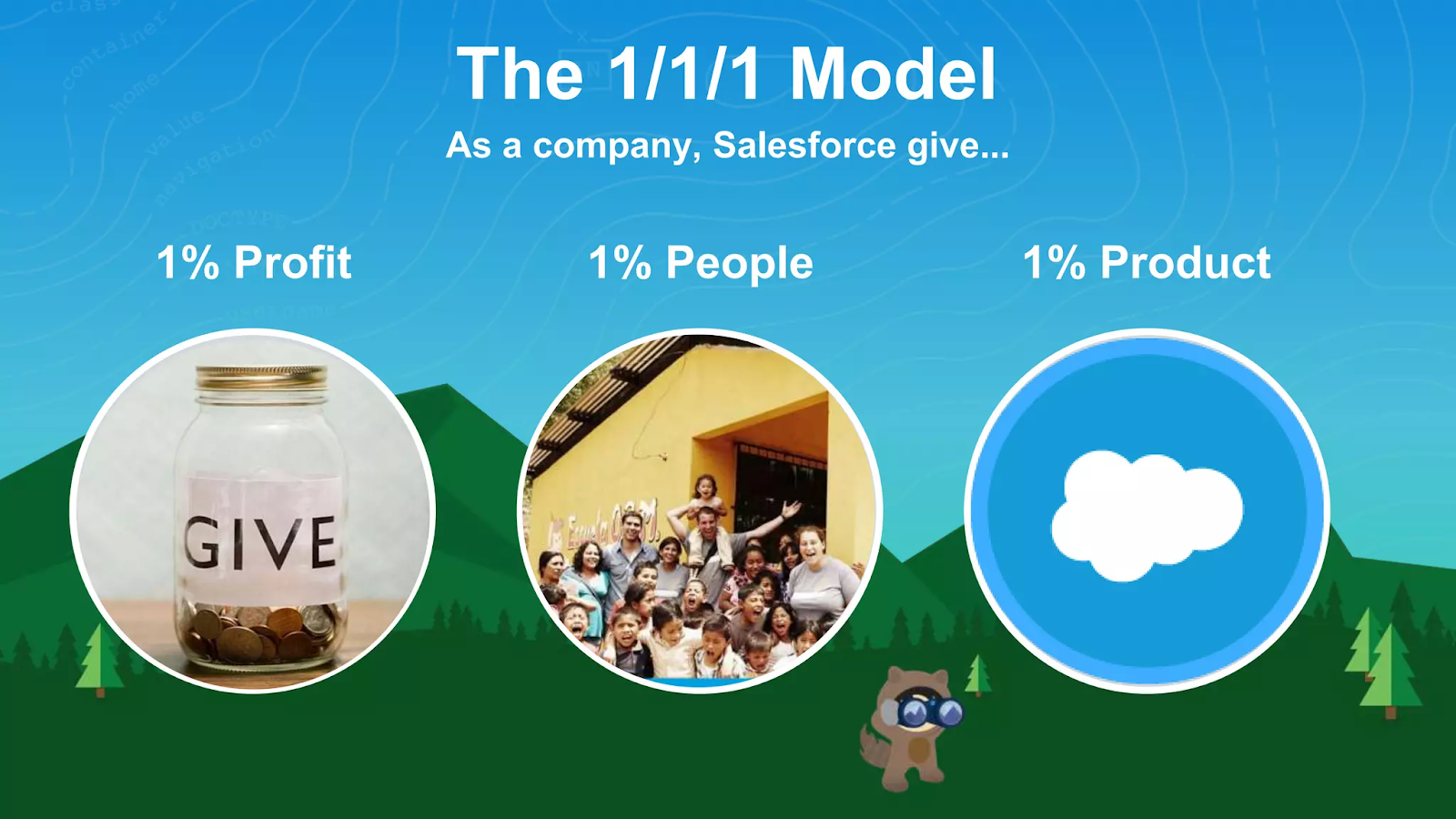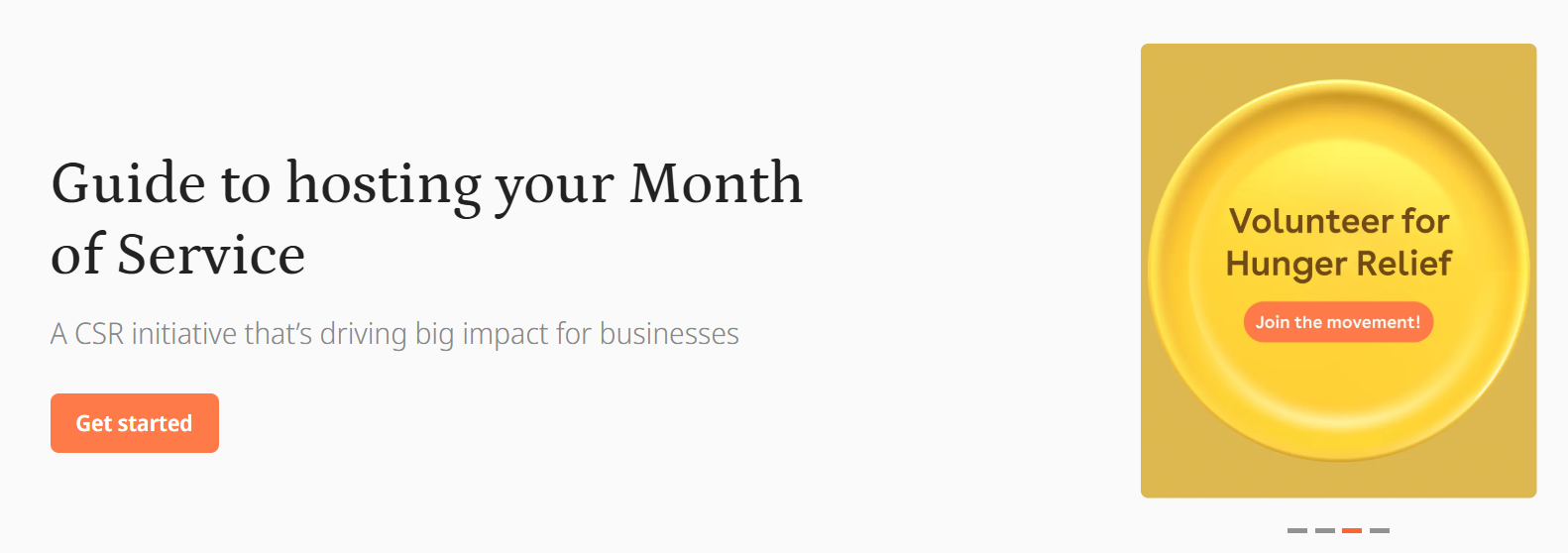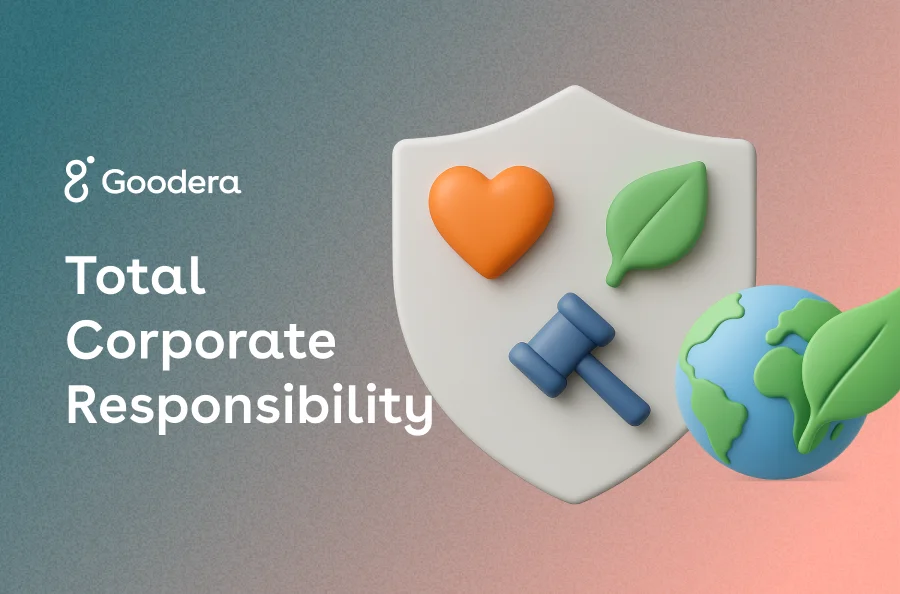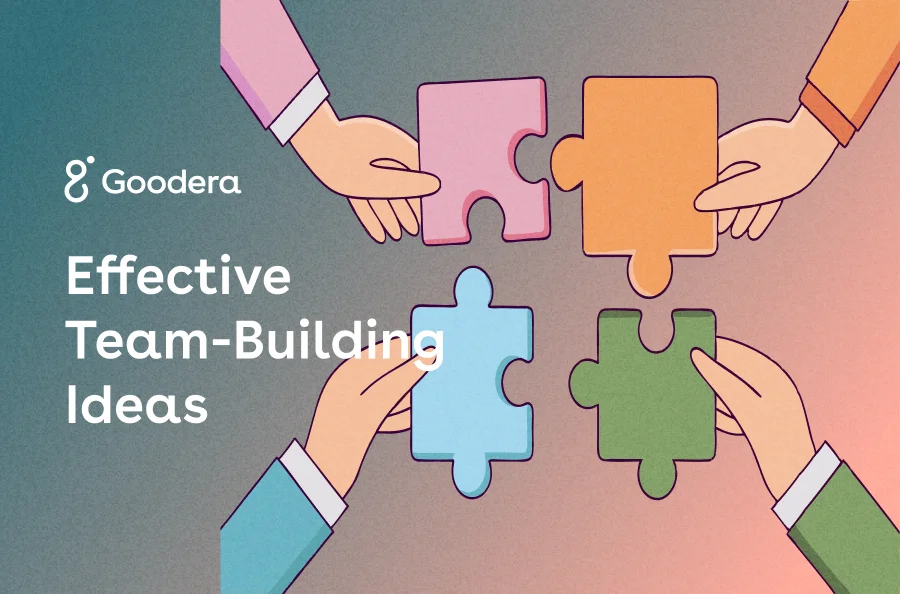What Is Corporate Philanthropy and Why It Matters in Today’s Purpose-Driven Business World
Purpose has become the new currency of business. In a world where people align with brands that reflect their values, companies are discovering that lasting success isn’t defined by profit alone, but by the positive impact they create and the principles they stand for. This shift has given rise to a powerful movement: corporate philanthropy, the practice of businesses using their resources to make a lasting difference in society.
But what is corporate philanthropy really about? It’s not just a donation drive or a tax-deductible gesture. It’s a philosophy of corporate citizenship, where companies take responsibility for the well-being of the communities they touch. Whether through strategic donations, employee volunteering, or partnerships that drive social innovation, modern corporate philanthropy is redefining how businesses show empathy and leadership.
What is corporate citizenship?
Corporate citizenship is a company’s commitment to act responsibly toward society by balancing profit with positive social and environmental impact. It reflects how a business contributes to the well-being of its communities, employees, and the planet.
Did you know? A 2023 CECP (Chief Executives for Corporate Purpose) report found that U.S. corporations donated over $26 billion to social causes in a single year, with nearly 70% linking their philanthropy directly to business goals like employee engagement and sustainability. That’s proof that doing good has become an integral part of doing business.
In this blog, we’ll explore the corporate philanthropy meaning, how it differs from corporate social responsibility (CSR), and real-world examples of companies that are proving generosity and growth can go hand in hand.
What Is Corporate Philanthropy?
Corporate philanthropy is the practice of companies using their resources, money, time, products, or expertise to create social and environmental good. In simple terms, it’s about doing business with a heart. When a company invests in communities, supports nonprofit initiatives, or empowers its people to volunteer, it’s taking part in a movement that balances profit with purpose.
The corporate philanthropy meaning goes beyond generosity. It’s a deliberate, strategic effort that connects a brand’s mission with the world’s most pressing needs. Whether the goal is to fight climate change, support education, or build resilient communities, modern philanthropy blends empathy with impact.
At its foundation, the corporate philanthropy definition focuses on sustainability and long-term change. Companies today don’t just donate, they collaborate, innovate, and measure outcomes to ensure every effort contributes to shared progress.
Here are some of the most common corporate philanthropy examples seen today:
1. Monetary Donations and Grants:
Financial contributions remain one of the most visible forms of philanthropy. Companies often allocate a portion of their profits to support nonprofit partners, community programs, or humanitarian initiatives. For instance, tech giants like Microsoft and Google run annual grant cycles that fund education, digital inclusion, and sustainability projects worldwide. These efforts not only address social issues but also strengthen brand credibility and stakeholder trust.
2. Employee Volunteering:
Many companies encourage their teams to contribute time and skills toward meaningful causes. From mentoring students to organizing food drives, volunteering creates a strong sense of purpose among employees. According to CECP’s 2023 report, 74% of U.S. employees say they feel more loyal to employers that offer volunteer opportunities, proving that purpose-driven engagement is good for both people and performance.
Alissa May, Vice President of Impact at Goodera, discussed during the “C-Suite and Engagement: Mobilizing Senior Leaders for Social Impact” webinar that leadership involvement in volunteering initiatives not only amplifies community outcomes but also inspires company-wide participation and trust.
3. In-kind Contributions:
Not all giving is financial. Some businesses donate their own products, technologies, or expertise to amplify nonprofit missions. For example, Salesforce provides free or discounted software to thousands of nonprofits, helping them manage donor data and streamline operations. Such in-kind contributions can have a long-lasting impact by equipping organizations with tools for growth and efficiency.
4. Cause Marketing Partnerships:
These collaborations connect corporate brands with causes in ways that benefit both. When a business donates a portion of sales or uses its platform to raise awareness for a campaign, it drives social impact while deepening customer trust. A classic example is Patagonia’s “1% for the Planet” pledge, where the company donates 1% of sales to environmental causes, blending purpose directly into its business model.
Did you know? According to The Conference Board’s 2024 Corporate Philanthropy Report, 85% of large U.S. companies increased their community investment budgets over the past year, with most prioritizing climate action, racial equity, and workforce development initiatives. This marks a significant shift toward philanthropy as a long-term business strategy, not a one-time act of goodwill.
The most effective philanthropy programs are designed with clear objectives, measurable outcomes, and authentic community partnerships. When businesses integrate giving into their culture, not just their budgets, they transform philanthropy from charity into a competitive advantage.
How Do You Define Corporate Philanthropy in Today’s Business Context?
To define corporate philanthropy today is to recognize that it’s more than generosity; it’s a philosophy that shapes how modern businesses operate. Companies now see giving not as an afterthought but as a reflection of their identity, values, and leadership principles.
The definition of corporate philanthropy has evolved from simple charity to a strategic, purpose-driven partnership between business and society. It’s about leveraging influence, innovation, and resources to create measurable social and environmental good while delivering value for employees, customers, and investors. This mindset represents a shift toward responsible, purpose-led corporate citizenship, where every initiative reflects integrity and impact.
What if corporate philanthropy wasn’t just about helping others, but about reshaping how success itself is defined?
The answer lies in purpose. When companies redefine success to include social and environmental progress, they stop viewing philanthropy as a cost and start treating it as an investment in people, trust, and long-term growth. True success, in today’s business landscape, isn’t measured solely by profits but by the positive difference a company makes in the world. That’s what separates a good business from a great one.
Modern corporate philanthropy is rooted in the concept of shared value, where doing good and doing business coexist. When companies align their giving strategies with their mission, supporting causes like sustainability, inclusion, or education, they nurture stronger communities, foster loyalty, and build authentic trust with stakeholders.
Over the years, this approach has transformed in three key ways:
- From transactional to transformational:
Traditional philanthropy focused on one-time donations or event sponsorships. Today, companies invest in long-term initiatives that create systemic change, from building schools to advancing renewable energy. This shift ensures that philanthropy delivers sustainable outcomes, not temporary relief, and drives meaningful progress over time. - From external goodwill to internal purpose:
Giving back is no longer limited to external reputation-building. It’s become an internal movement that empowers employees and leaders alike. When teams volunteer or contribute to causes they care about, they develop a deeper connection to company values, creating a culture of empathy and shared purpose that strengthens retention and morale. - From charity to strategy:
The most successful businesses approach philanthropy as a core strategic pillar. They use data, partnerships, and storytelling to ensure every contribution supports business objectives and community needs simultaneously. This results in programs that are not only measurable and transparent but also integrated into brand identity and long-term sustainability goals.
A defining example is Salesforce’s 1-1-1 model, which dedicates 1% of equity, 1% of products, and 1% of employee time to social causes. This innovative framework has inspired hundreds of companies globally to bake philanthropy into their DNA, proving that generosity can drive innovation, brand loyalty, and long-lasting change.
Did you know? A 2024 Deloitte study found that 73% of global executives believe companies that integrate corporate philanthropy into business strategy outperform their peers in reputation, trust, and employee engagement, underscoring that doing good is now a business imperative, not a bonus.
Treat philanthropy as part of your organization’s growth strategy. When leaders, employees, and partners all have a stake in giving, your impact becomes more authentic, measurable, and enduring.
Discover how community-led regeneration is transforming local ecosystems. Listen to Episode 7: Rooted in Action – Regeneration and Community, a podcast from The Good Talk series by Goodera.

What Are Some Examples of Corporate Philanthropy in Action?
These corporate philanthropy examples show that giving is no longer a one-size-fits-all activity; it’s a strategic and creative extension of what companies stand for. Each of these brands demonstrates a different way businesses can act as agents of change, strengthening both community and company.
- Salesforce:

Salesforce’s innovative 1-1-1 model dedicates 1% of its equity, 1% of products, and 1% of employee time to social causes. This approach has inspired more than 17,000 companies to adopt similar frameworks, proving that philanthropy can be both scalable and sustainable. By building generosity into its business model, Salesforce has redefined what it means to grow with purpose and impact.
- Google.org:
Google’s philanthropic arm, Google.org, funds technology-driven solutions that address global challenges such as education access, sustainability, and disaster response. From AI-based flood forecasting to upskilling underrepresented communities, Google shows how innovation can be used to solve complex social issues, where empathy meets engineering for the greater good.
- Patagonia:

An advocate for environmental sustainability holds the “1% for the Planet” banner, symbolizing a global commitment to donating 1% of annual sales to protect the Earth.
Patagonia is a benchmark in authentic corporate citizenship. Through its self-imposed “Earth Tax,” the company donates 1% of annual sales to environmental nonprofits and reinvests profits into climate activism. In 2022, Patagonia’s founder transferred ownership of the company to a trust committed to protecting the planet, transforming business ownership into environmental stewardship.
- Microsoft Philanthropies:
Microsoft Philanthropies champions digital inclusion by providing cloud technology, grants, and education to underserved communities and nonprofits. Its initiatives have empowered millions with access to digital tools and opportunities, showcasing how a company’s core expertise can directly advance social progress. Here, philanthropy isn’t just financial, it’s intellectual and transformative.
- Starbucks:
Starbucks invests in youth empowerment and community development through its “Community Stores,” which direct profits into local initiatives such as job training and food security programs. By integrating philanthropy into its everyday operations, Starbucks builds deeper connections with customers and neighborhoods, proving that social good can be brewed right into business culture.
Each of these initiatives reflects a universal truth: corporate philanthropy thrives when it aligns with a company’s mission and values. Whether it’s technology, environmental activism, or community engagement, modern giving works best when it’s purposeful and deeply embedded in corporate identity.
What if every company saw philanthropy not as charity, but as a competitive advantage that fuels innovation, loyalty, and resilience?
When giving becomes part of a company’s DNA, it transforms how people perceive its brand, how employees connect to its purpose, and how customers choose to engage. Purpose-driven companies don’t just make profits, they make progress.
Did you know? Global corporate giving grew by 11% in 2023, according to the Charities Aid Foundation, with nearly two-thirds of major corporations tying their philanthropy directly to sustainability and DEI objectives. This proves that businesses aren’t just giving back, they’re actively building the future.
Expand your definition of giving. The most successful philanthropy programs combine employee passion, technology, and strategic partnerships to create scalable, measurable impact, where every act of generosity becomes a driver of growth.
How Is Corporate Philanthropy Different from Corporate Social Responsibility (CSR)?
While the terms corporate philanthropy and Corporate Social Responsibility (CSR) are often used interchangeably, their goals and scope differ in meaningful ways. Understanding the distinction helps businesses design more focused, effective impact strategies that balance both purpose and performance.
At its core, corporate philanthropy is about direct giving and community engagement, the tangible ways companies contribute to society through donations, volunteering, or partnerships. It’s the emotional expression of a company’s heart.
CSR, on the other hand, represents a company’s conscience. It’s the broader commitment to operate responsibly, ethically, and sustainably, covering everything from supply chain transparency and carbon reduction to diversity, equity, and inclusion initiatives.
In simple terms, if CSR defines how a company does business, philanthropy defines why it gives back. The two are interconnected, but they serve distinct purposes within a company’s overall impact strategy.
Key Differences Between CSR and Corporate Philanthropy
1. Focus and Intent:
Corporate philanthropy focuses on giving back, creating goodwill and immediate community impact through donations, volunteering, or social programs. CSR, however, integrates ethical, environmental, and social responsibility into everyday business decisions, shaping long-term sustainability and accountability.
2. Scope and Strategy:
Philanthropy often revolves around specific initiatives, campaigns, or partnerships that align with a company’s values. CSR is broader, a company-wide framework that governs how business is conducted responsibly, from product sourcing to workforce well-being.
3. Examples and Application:
Common corporate philanthropy examples include volunteer programs, grants, or disaster relief funding. CSR encompasses larger systemic commitments like achieving net-zero emissions, ensuring fair labor practices, or advancing equity within leadership.
4. Goals and Outcomes:
The goal of philanthropy is to create goodwill and social value, while CSR aims to embed integrity and sustainability across the business model. Together, they reinforce trust, loyalty, and long-term growth.
What if the most powerful business strategy isn’t choosing between CSR and philanthropy, but learning how to merge them seamlessly?
When companies integrate CSR’s structural accountability with philanthropy’s human connection, they achieve both credibility and emotional resonance. That balance creates authentic corporate citizenship, where doing good isn’t a department, it’s a defining part of identity.
The 2024 Edelman Trust Barometer reflects that 71% of consumers are more likely to support brands that combine sustainable operations with active community giving, proving that alignment between CSR and philanthropy strengthens both impact and trust.
Don’t treat CSR and philanthropy as separate checkboxes. Build an integrated impact framework, one that measures environmental progress, empowers employees, and channels giving into causes that reflect your core mission. When both work together, purpose becomes your competitive edge.
Also read: What Is CSR in Business? A Complete Guide to Corporate Social Responsibility
Why Does Corporate Philanthropy Matter in Today’s Purpose-Driven World?
In today’s purpose-driven business environment, corporate philanthropy is no longer a secondary initiative; it’s a strategic priority. Companies are realizing that how they show up for their communities directly affects how they’re perceived by consumers, employees, and investors alike.
At its essence, the corporate philanthropy definition isn’t just about charitable giving; it’s about aligning company purpose with community progress. When done authentically, it strengthens culture, builds credibility, and proves that doing good and doing well can coexist.
Have you ever given it a thought: Why do purpose-driven companies attract more loyalty and trust than those that simply market responsibility?
That is because impact builds connection. When businesses act with empathy, transparency, and consistency, people see more than a brand; they see a partner in progress. That emotional bond is what defines true corporate citizenship in today’s world.
Here’s why corporate philanthropy matters now more than ever:
- Builds Brand Trust and Reputation: In an era of information overload, consumers reward companies that stand for something real. According to the 2024 Porter Novelli Business & Purpose Study, 78% of Americans are more likely to buy from a company that leads with purpose, and 66% would switch brands to support one that gives back. Corporate philanthropy showcases a company’s integrity through action, turning trust into lasting brand equity.
- Enhances Employee Engagement and Retention: Employees want to work for organizations that make a difference. The PwC Global Workforce Hopes & Fears Survey 2023 found that 75% of employees prefer to work for purpose-driven employers, and engagement levels soar when companies offer opportunities for volunteering or community involvement. Purpose amplifies pride, and that pride drives retention, productivity, and innovation across the board.
- Strengthens Community Resilience and Local Relationships: Philanthropy helps companies become integral to the communities they operate in. When businesses support local education, food security, or disaster response, they don’t just address needs; they build networks of mutual trust. The Harvard Business Review reported that communities with strong corporate engagement experience a 23% higher rate of recovery and stability after crises, proving that giving back also fuels shared resilience.
- Supports sustainability and long-term global goals: Modern giving aligns with global frameworks like the UN Sustainable Development Goals (SDGs). From renewable energy grants to equitable access initiatives, philanthropy helps businesses make tangible progress on climate, inclusion, and well-being. The 2024 KPMG Sustainability Report revealed that nearly 80% of the world’s top companies now integrate philanthropy into their ESG strategies, demonstrating that responsible growth and social impact are now inseparable.
The most successful companies don’t treat philanthropy as an afterthought. They build it into business strategy, leadership KPIs, and employee experiences, turning every act of giving into a catalyst for connection, innovation, and trust.
How Does Corporate Philanthropy Connect to Corporate Citizenship?
Corporate philanthropy is one of the most powerful expressions of corporate citizenship, the belief that businesses are active members of the communities they serve, not isolated entities operating apart from them.
When companies invest in education, the environment, or social causes, they acknowledge a deeper truth: success is interdependent. Strong communities create strong businesses. Through philanthropy, companies show they understand that their role extends beyond profit; it includes stewardship, empathy, and shared responsibility.
Corporate citizenship blends empathy with accountability. It’s about doing what’s right, even when no one’s watching, being transparent, equitable, and ethical in both intent and action. Philanthropy is how this philosophy takes shape in the real world.
Did you know? A Boston College Center for Corporate Citizenship study revealed that companies recognized for strong community engagement outperform their peers by 19% in shareholder return, a reminder that doing good and doing well are now inseparable.
What truly defines a great company, its profits, or its principles? In today’s purpose-driven world, greatness is measured by impact. The most respected organizations aren’t just those that perform well financially, but those that lead with integrity, compassion, and purpose. Corporate philanthropy bridges this gap by transforming a company’s principles into tangible progress, turning values into visible action that benefits people, communities, and the planet alike.
Approach philanthropy not as a series of donations, but as a relationship with society. The most trusted brands don’t just fund change, they co-create it with their communities.
How Can Companies Build a Strong Corporate Philanthropy Strategy?
A strong corporate philanthropy strategy begins with purpose. The most successful companies don’t treat giving as an afterthought; they make it a pillar of their identity. Effective philanthropy is not about how much you give, but why and how you give. It requires clarity of intention, a connection to core values, and a long-term vision that benefits both business and society. When philanthropy is approached strategically, it becomes a cycle of impact, empowering communities, engaging employees, and reinforcing brand trust.
1. Define Your Purpose With Absolute Clarity:
Start by identifying the social or environmental problems that genuinely align with your company’s mission, products, and stakeholder values. This is the foundation of any effective corporate philanthropy strategy. Be specific: name the causes you’ll prioritize, explain why they matter to your business and community, and set a multi-year intent so every initiative ties back to that purpose. Document the rationale publicly so employees, partners, and customers can see the authentic connection between your giving and your brand.
2. Set Clear Goals, KPIs, and Governance Models
Translate purpose into measurable objectives, e.g., number of people served, volunteer hours, outcomes achieved, or reductions in community risk, and assign owners, budgets, and decision rights. Create a governance structure (steering committee or executive sponsor, program managers, and volunteer champions) to approve strategy, manage partnerships, and review progress quarterly. Treat philanthropy like a business line: regular scorecards and clear accountability keep efforts focused and fundable.
3. Engage Employees As Co-creators, Not Just Participants
Build programs that invite employees to shape priorities, volunteer their skills, and propose community projects; this turns giving into a company-wide movement. Offer a mix of options, paid Volunteer Time Off (VTO), skills-based volunteering, matching gifts, and innovation challenges, so employees across roles and locations can participate meaningfully. Embed recognition, learning, and career benefits into participation so volunteering becomes a valued part of the employee experience.
4. Design Authentic, Long-term Partnerships
Choose nonprofit partners based on expertise, capacity, and shared outcomes instead of one-off visibility. Co-create multi-year programs with them, from pilot to scale, that include clear roles, milestones, and capacity-building components so local organizations grow, not just receive. Formalize expectations in partnership agreements and invest in relationship management; deep partnerships turn short-term donations into systemic change.
5. Allocate Resources Strategically: Money, People, and Products
Build an annual philanthropy budget that covers discretionary grants, matching programs, operational support for partners, and internal program costs (platforms, training, measurement). Don’t forget to allocate staff time and tools; dedicating program managers and volunteer coordinators is as critical as the financial line item. Consider in-kind contributions (software, consulting, products) as part of your resource mix and value them transparently in impact reporting.
6. Measure What Matters and Iterate Quickly
Define a small set of outcome-focused metrics (not just inputs), e.g., improvements in school attendance, job placements, carbon reductions, and collect both quantitative and qualitative evidence. Use dashboards to surface trends, learnings, and stories; run regular reviews with partners to adapt activities based on results. Treat measurement as learning: if an approach isn’t delivering impact, pivot early rather than repeating sunk-cost behaviors.
7. Communicate Transparently and Tell Human Stories
Publish annual impact summaries that combine data with beneficiary stories, volunteer highlights, and lessons learned; transparency builds trust with employees, customers, and investors. Avoid one-off PR pushes, maintain a steady cadence of authentic updates across channels (internal newsletters, impact microsites, investor reports). Always credit partners and communities; authentic storytelling amplifies impact and invites others to join.
8. Embed Philanthropy Into Strategy and Scale Responsibly
Make giving part of product roadmaps, leadership KPIs, and talent development plans so philanthropy is sustained through leadership changes and market cycles. Pilot locally, document outcomes, then scale only when the model demonstrates reproducible impact and partner capacity exists. Ensure scalability never dilutes local relevance; what works broadly must still respect community context.
9. Institutionalize Continuous Improvement and Corporate Citizenship
Regularly audit your approach, policies, budget allocation, partner performance, and employee participation, and surface governance-level learnings to improve year-over-year. Foster a culture of corporate citizenship where doing right is rewarded, and embed philanthropy into onboarding, leadership reviews, and supplier expectations. The goal: move from occasional giving to a predictable, strategic force that strengthens communities and the business simultaneously.
When done right, a corporate philanthropy strategy becomes far more than a checklist; it evolves into a living framework that guides how a company operates, connects, and grows. Each step, from defining purpose to institutionalizing corporate citizenship, strengthens the fabric of a responsible organization. It transforms giving from a transactional gesture into a transformational force that builds trust, nurtures loyalty, and drives sustainable impact. In the end, the strongest philanthropy strategies aren’t just about funding change; they’re about becoming the kind of company that creates it every single day.
Download this Guide to hosting your Month of Service to start your company’s Month of Service today and inspire employees to give back through impactful volunteering.

Wrapping It Up: The Future Belongs to Purpose-Led Businesses
Corporate philanthropy isn’t just a corporate trend; it’s the future language of leadership. In a world defined by transparency, choice, and conscience, people no longer ask, “What does your company sell?”; they ask, “What does your company stand for?”
When businesses put compassion at the center of strategy, they create a legacy far more valuable than quarterly returns. They build ecosystems of trust, where employees feel inspired, customers feel connected, and communities feel seen. That’s the real power of corporate citizenship in motion.
The most visionary companies understand that philanthropy isn’t the destination; it’s the bridge between purpose and profit, empathy and efficiency, humanity and innovation. Every grant, every hour volunteered, every partnership forged becomes a small ripple in a much larger tide of global progress.
So, as you reflect on your organization’s journey, ask this: What story will your impact tell?
Because in tomorrow’s business world, the greatest measure of success won’t be how much a company earns, but how much better the world becomes because it exists.
Frequently Asked Questions
1. What is the main purpose of corporate philanthropy?
The main purpose of corporate philanthropy is to create positive social and environmental impact by directing a company’s resources, such as funding, time, products, and expertise, toward addressing community needs. It allows businesses to give back to society in ways that align with their mission and values, while strengthening trust among employees, customers, and investors. Corporate philanthropy also enhances brand reputation, builds loyalty, and demonstrates that success and social good can coexist.
2. How is corporate philanthropy different from CSR?
Corporate philanthropy focuses on direct giving and community engagement, activities like donations, volunteer programs, and nonprofit partnerships. Corporate Social Responsibility (CSR), however, encompasses a company’s broader ethical and sustainable practices, including reducing carbon footprints, ensuring fair labor, and promoting diversity and inclusion. In short, CSR defines how responsibly a company operates, while philanthropy defines how generously it contributes to society. Together, they form a complete model of corporate citizenship.
3. Why is corporate philanthropy important in today’s business world?
Corporate philanthropy is vital because it builds authenticity, trust, and long-term value in a purpose-driven marketplace. Today’s employees and consumers expect companies to act responsibly and invest in causes that matter. By aligning giving with business goals, such as sustainability, equity, and community resilience, organizations foster stronger engagement, attract top talent, and enhance reputation. Studies show purpose-led companies outperform competitors in customer loyalty and stakeholder confidence, proving that doing good is now a business advantage.
4. What are some examples of successful corporate philanthropy programs?
Examples of effective corporate philanthropy include Salesforce’s 1-1-1 model, which donates 1% of profits, equity, and employee time to social causes; Patagonia’s commitment to donating 1% of sales to environmental nonprofits; and Microsoft’s digital inclusion programs that expand access to technology and education. Each demonstrates how companies can align their core strengths with social impact, transforming philanthropy into a long-term growth and purpose strategy.
5. How can companies build an effective corporate philanthropy strategy?
An effective corporate philanthropy strategy begins with defining a clear purpose and aligning it with business goals. Companies should set measurable objectives, engage employees through volunteering and matching programs, form authentic partnerships with credible nonprofits, and track impact transparently. Integrating philanthropy into company culture and leadership KPIs ensures long-term sustainability and credibility.
6. What are the benefits of corporate philanthropy for businesses?
Corporate philanthropy strengthens brand trust, attracts talent, enhances employee satisfaction, and improves customer relationships. It also helps businesses meet ESG and sustainability goals, expand their social license to operate, and differentiate themselves in competitive markets. In essence, philanthropy builds emotional capital, turning goodwill into long-term brand equity.
7. How does employee volunteering contribute to corporate philanthropy?
Employee volunteering transforms corporate philanthropy from a top-down initiative into a company-wide movement. It allows employees to contribute their time and skills to meaningful causes, fostering engagement, teamwork, and pride. Studies show that companies with strong volunteering cultures enjoy higher retention and productivity, proving that giving back is good for both people and performance.
8. What role does leadership play in driving corporate philanthropy?
Leadership sets the tone for effective philanthropy. When executives champion giving initiatives, allocate resources, and lead by example, they inspire organization-wide participation. As Alissa May, Vice President of Impact at Goodera, highlighted in the “C-Suite and Engagement: Mobilizing Senior Leaders for Social Impact” webinar, leadership involvement in community programs creates trust, visibility, and long-term engagement.
9. How can companies measure the impact of corporate philanthropy?
To measure impact, companies should track both quantitative and qualitative metrics, such as funds donated, volunteer hours, communities reached, and outcomes achieved. Using dashboards, annual reports, and partner feedback helps ensure transparency and continuous improvement. Impact measurement also reinforces accountability, helping organizations optimize their giving for greater results.
10. What is the future of corporate philanthropy?
The future of corporate philanthropy lies in integration, innovation, and inclusion. Companies are shifting from transactional donations to data-driven, partnership-based approaches that align with sustainability goals and community needs. Emerging trends such as skills-based volunteering, ESG-aligned giving, and employee-led initiatives will define the next era, where business success and social impact are inseparable.











